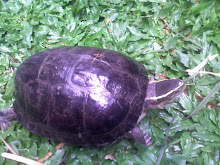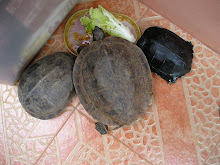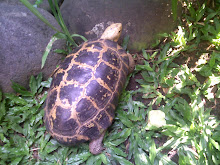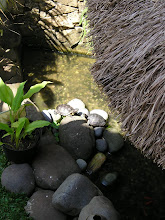By Chris Tabaka DVM and Darrell Senneke of the World Chelonian Trust
From the World Chelonian Trust website at http://www.chelonia.org
This care sheet is intended only to cover the general care of this species. Further research to best develop a maintenance / reproduction plan for whichever species you are caring for is essential.
Presently the genus Cyclemys is split into 4 species. It is almost certain that this will be further split as further research is done on this wide-ranging genus. Much like the map turtles (Graptemys) of the American Midwest and South, there are distinct differences between populations found in different river drainages. Though Cyclemys species are often called Asian leaf turtles, this often leads to some confusion with other chelonians that have the word “leaf” in their common name such as the Black-breasted or Vietnamese leaf turtle (Geomyda spengleri) as well as the Vietnam leaf turtle (Annamemys annamensis).
At the present time this species is a frequent import in the pet trade. This may change though because of its presence in the Asian food markets. The availability of Leaf turtles as wild caught specimens is certain to decline in the coming years unless rapid changes are made in the culinary and traditional medicine practices of that part of the world. For more information on this please see the "Animal Markets of China" hosted by the World Chelonian Trust at http://www.chelonia.org/. Luckily at the present time Cyclemys dentata is being captive bred with some frequency and the other species are sure to follow as breeders focus more on this Genus.
Cyclemys have a rounded carapace (hence the Generic name which means “Circle turtle”) and grow to about 25 cm (10 inches) in length. The base color is usually a variation of brown with the plastron and sometimes the carapace showing radiating lines on each scute. Cyclemys possess a distinct vertebral keel and a serrated rear carapacial margin. This is much more pronounced in the young and may offer some protection against predators such as frogs or fish that may opportunistically attempt to swallow the spiky shelled hatchlings. Large adults develop a transverse plastral hinge, which, in the case of females, may allow for easier egg passage during ovipositioning.
Young Cyclemys are fairly aquatic and can be kept much like any other basking turtle. They do appear to become more terrestrial as they age with adults spending much of their time on land. In the wild, Cyclemys are found in or near ponds, small rivers, and slow moving streams. They are not strong swimmers preferring instead to walk on the bottom of a body of water rather than swimming freely. According to Das5 adults spend their nights on land and move to water during the day.
Thanks to the success that breeders are having with the species (at least Cyclemys dentata) it is now possible to purchase hatchlings from captive born stock. Such specimens are much more desirable as pets as they are much healthier and well acclimated to captivity.
Housing Leaf Turtles Indoors
The most useful form of indoor accommodation for hatchling Cyclemys consists of an aquarium. For hatchlings we suggest a water depth of 2 to 4 inches (5 to 10 cm) with one end built up with rocks to provide a dry basking spot. A reasonable sized aquarium for a hatchling is a 20 gallon: 30 inches by 12 inches, (75 cm by 30 cm). As the animal grows the size of this habitat should be increased.
Water quality is very important. Many problems with Leaf turtles can be averted if one spends a little time and money designing and purchasing an adequate filtration system for your pets. Hatchlings are sometimes difficult to provide good filtration for because of the depth of the water. For these a submersible foam filer or power filter and frequent water changes is the rule.
In one corner of the environment a hardware store reflector clip light lamp should be positioned over the dry basking area to provide artificial basking facilities. This should be positioned to provide a focal basking spot of 90 degrees F or so (32 degrees C) in that section of the habitat. The habitat should also be equipped with a full spectrum fluorescent light to provide for UVB. A UVB source is necessary for Vitamin D3 synthesis (necessary for calcium metabolism). If preferred to this lighting arrangement a Mercury vapor bulb may be used that fulfills both heat and UV requirements. Live or plastic aquatic plants are suggested to provide a sense of security and hiding places.
For adults an environment that is at least 50% land is recommended. The water should be at a depth that the animal may easily reach the surface while standing on the bottom.
Outdoor Housing
Predator proof outdoor habitats offer many advantages over indoor accommodations and should seriously be considered during warm weather months. A child’s wading pool sunk into the ground in a secure enclosure makes for a serviceable outdoor habitat. Larger ponds with advanced filtration can be used to provide a spectacular outdoor home for your Leaf turtles.
Diet
This Genus is a true omnivore; the diet in the wild consists of figs, fruits, carrion, fish, and crustaceans. In captivity this should be duplicated as closely as possible. Be careful not to overfeed your Cyclemys as obesity is a common problem. Feeding 2 to 3 times a week for adult turtles and small amounts every day to every other day for rapidly growing hatchlings is appropriate. Leaf turtles will readily accept many of the commercially prepared turtle diets that exist on the market today.
The diet offered should consist of:
Commercially prepared turtle diets such as Purina Aquamax or Mazuri freshwater turtle diet
Fruits (figs and soft fruits)
Insects
Worms
Fish
Additional calcium supplementation is necessary if the commercially prepared nutritionally complete diets do not make up a large portion of the diet. Powdered calcium with vitamin D3 can be sprinkled all foods. Provision of a cuttlefish bone, which can be gnawed if desired, is also recommended.
Medical
Newly imported Cyclemys often need immediate medical care. This species is often exposed to a number of pathogens in the Asian markets and thus needs prompt medical attention. Septicemia and protozoal infections are the norm for newly imported animals.
As dosage information available on the Internet or in hobbyist books is often dated and potentially dangerous, please work closely with your veterinarian to care for your animals.
It should be noted that turtle and tortoise care research is ongoing. As new information becomes available we share this on the World Chelonian Trust web site at http://www.chelonia.org/. Serious keepers find it to be a benefit to have the support of others who keep these species. Care is discussed in our free online email community, which may be joined from the web address above. Please contact us about the many benefits of becoming a member of the World Chelonian Trust.
World Chelonian Trust
685 Bridge Street Plaza PMB# 292
Owatonna, MN
55060
Sunday, 16 August 2009
Subscribe to:
Post Comments (Atom)
































.jpg)

+085.jpg)





.jpg)
No comments:
Post a Comment